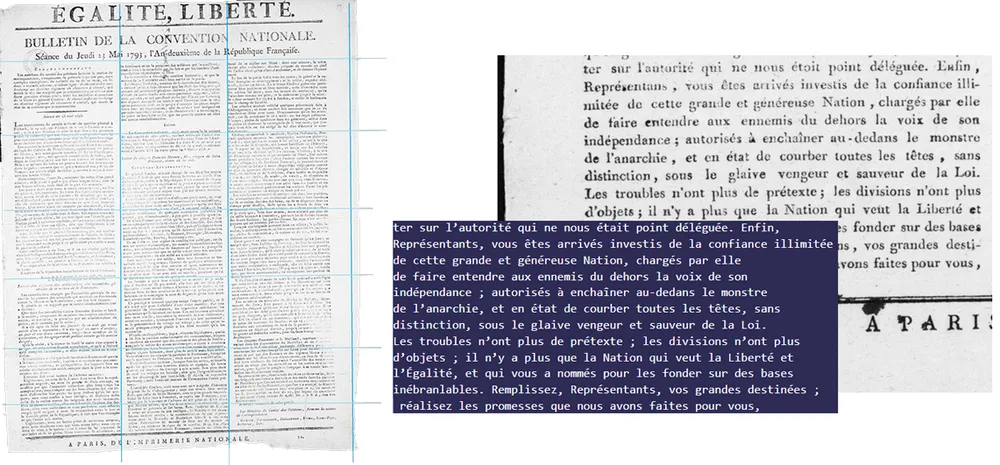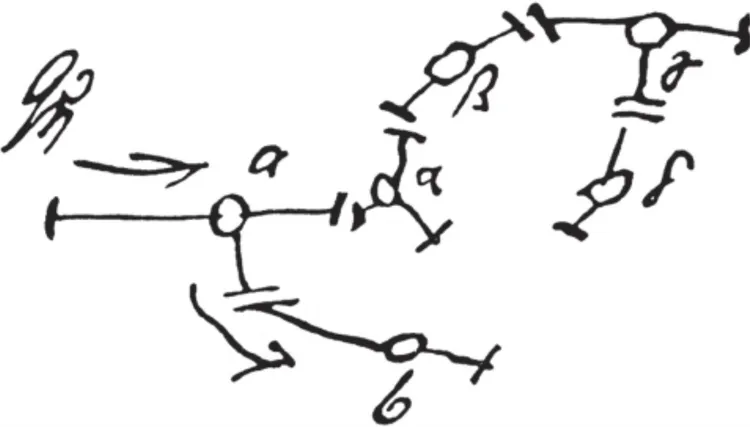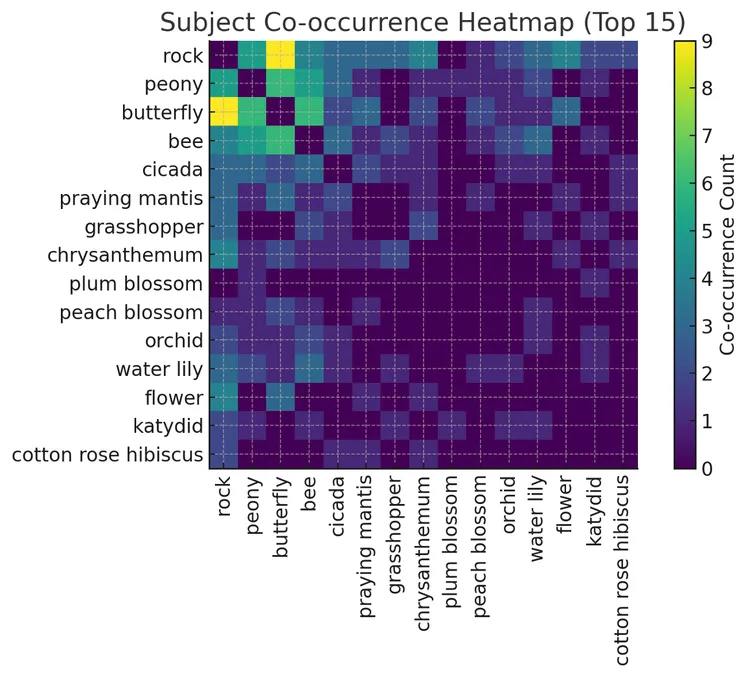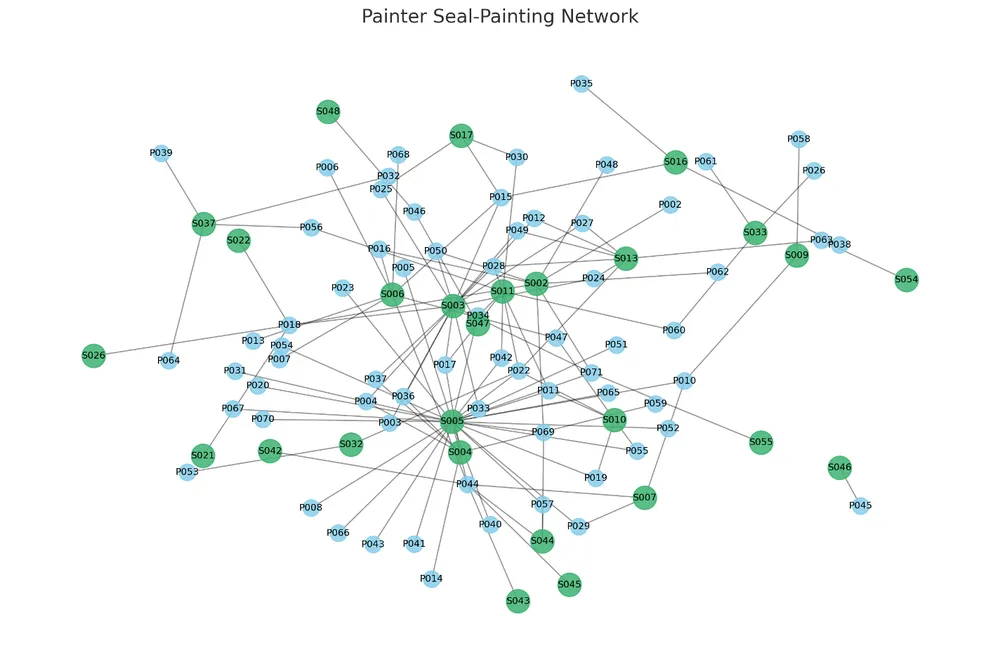Grad Fellows advance research with AI, other digital and computational tools
4 June 2025

Digital collage featuring illustrative elements of fellows' research. Credit: Carrie Ruddick
From decoding Sigmund Freud’s handwriting to identifying patterns in nineteenth-century Chinese paintings, this spring’s five CDH Graduate Fellows pursued a wide range of individual projects while attending cohort meetings that fostered community among the group.
The fellowship program, led by Grant Wythoff (Digital Humanities Strategist, CDH), is supported by staff from both DiSCHO and the CDH. Wouter Haverals (Associate Research Scholar, CDH; Perkins Fellow, Humanities Council) guided this semester’s cohort.
“Each Graduate Fellow brings to the table a concrete research question or problem. We then collaboratively explore which computational and digital methods could best support their inquiry,” Wouter explained. “Though their projects span vastly different fields and periods, this shared search for methodological solutions creates natural connections and collaborative opportunities.”

Emilien Arnaud
Scans from the Bulletin de la Convention Nationale, “the official journal of Revolutionary France’s National Assembly," and a transcription excerpt.
Not surprisingly, AI featured among the methods Graduate Fellows engaged with this semester. For instance, Emilien Arnaud (History) used generative AI to “produce human-like transcriptions” of scans from the Bulletin de la Convention Nationale, “the official journal of Revolutionary France’s National Assembly.”
Despite the importance of the journals, Emilien explained, “historians have not yet engaged with them in a systematic way. My aim was to bridge that historiographical gap by obtaining transcriptions of the journal and conducting text-as-data analysis on the resulting corpus.”
Although considerable work remains, Emilien noted that “the model performed exceptionally well on brief passages (under 300 words), achieving nearly 100 percent accuracy—I found no errors in the sample of files I validated manually.”

Florian Endres
Screenshot of a translation of Sigmund Freud's handwriting on eScriptorium.
Florian Endres (Comparative Literature) engaged with AI from both practical and theoretical perspectives.
For his project, Florian applied handwritten text recognition (HTR) to Freud’s “notoriously challenging handwriting in his notes, annotations, and drafts” with the goal of “training a dataset for AI software.” At the same time—consistent with the CDH’s Humanities for AI initiative—he turned a critical eye to new technological developments.
“Freud, along with subsequent theorists who built upon his work consistently made allusions to technological systems and devices,” Florian noted, asking: “How can we take these references seriously beyond mere metaphors and utilize them to engage with digital tools by explicitly exposing the mechanisms of AI and subjecting them to analysis and critical reflection?”

Florian Endres
Neural network, drawn by Sigmund Freud.
Graduate Fellow Qiran Jin (East Asian Studies) sought to “reconstruct” a corpus from two millennia ago: thousands of wood manuscripts and “fragmented shavings” from Han China.
The fragments are “relics of student writing practices with a lost primer at the time,” Qiran explained. “In this practice, students would hold a multifaceted stick in one hand and practice writing Chinese characters with a brush in the other. After each practice session, they would scrape off the writing with a knife, creating shavings as they repeated the process.”
The result was multiple layers of writing.
Over the course of the semester, Qiran used stylometry tools, such as “principal component analysis (PCA), Bootstrap consensus trees and BERT,” to try to determine the content of both the primer and the “the multi-layers of the fragmented manuscripts.”

Shing-Kwan Chan
A 15 × 15 co‑occurrence matrix for the most common subjects.
Of course, not all projects focused on texts. Shing-Kwan Chan (Art and Archaeology) built a relational database of paintings by the nineteenth-century Chinese painter Ju Lian that included “details for each piece—things like titles, images, dimensions, the medium, any inscriptions, and importantly, the specific subjects depicted and the seals used.”
He then analyzed the dataset using a variety of methods, including data visualization and network analysis, in hopes of “uncover[ing] patterns . . . that would be incredibly challenging to discern through purely traditional, qualitative art historical study.”
“One of the most illuminating findings so far emerged from the subject co-occurrence analysis, particularly when visualized as a heatmap,” Shing-Kwan noted. “By systematically mapping how frequently different motifs appeared together in Ju Lian's paintings, I was able to identify strong patterns,” advancing his research on the painter.

Shing-Kwan Chan
The "Painter Seal-Painting network" illustrates the relationships between specific seals used by the painter and the paintings on which they appear.
In addition to progressing in their independent project, this semester’s cohort also had a chance to connect with other scholars engaged in DH. Emilien, for example, explained that he collaborated with fellow Graduate Fellow Lina Skoglund (Politics), “whose work on communication and state stabilization closely aligned with [his] interests.”
Lina’s project examined the role of information in the establishment and consolidation of authoritarian regimes, with a focus on the emergence of modern state surveillance under Joseph Fouché, Napoleon’s notorious Minister of Police. Drawing on a comprehensive collection of daily police reports from 1804 to 1810—she used both supervised and unsupervised language models to classify the text data and explore how the police’s information network provided a base to the autocratic regime.
“The amount of information contained in the files is overwhelming,” Lina explained. “Monitoring actual threats to the regime represented only a small fraction of the data collected and curated by Fouché for Napoléon. The primary purpose of the police reports was to highlight the regime's ability to infiltrate society and showcase the police’s strength and omniscience.”
Lina noted that she enjoyed "brainstorming different possible solutions and hacks" at the cohort meetings, adding, “the openness and casualness of the discussions allowed me to tackle issues, however small or big, as I was encountering them.”
For Florian, both engagement with peers and the expertise of the CDH staff proved important as he developed DH skills.
“The CDH staff was tremendously helpful and guided me in the right direction to make my project a success,” Florian explained. “Even with limited prior technical knowledge of the tools and methods of digital humanities my time at CDH was incredibly productive due to the collaborative atmosphere, the bi-weekly exchanges with my co-fellows, and the patient mentorship of the organizers.”
Interested in applying for a Graduate Fellowship? Applications for the Spring 2026 cohort will be available in the fall. Head to the CDH Graduate Program page to see more opportunities for graduate students.